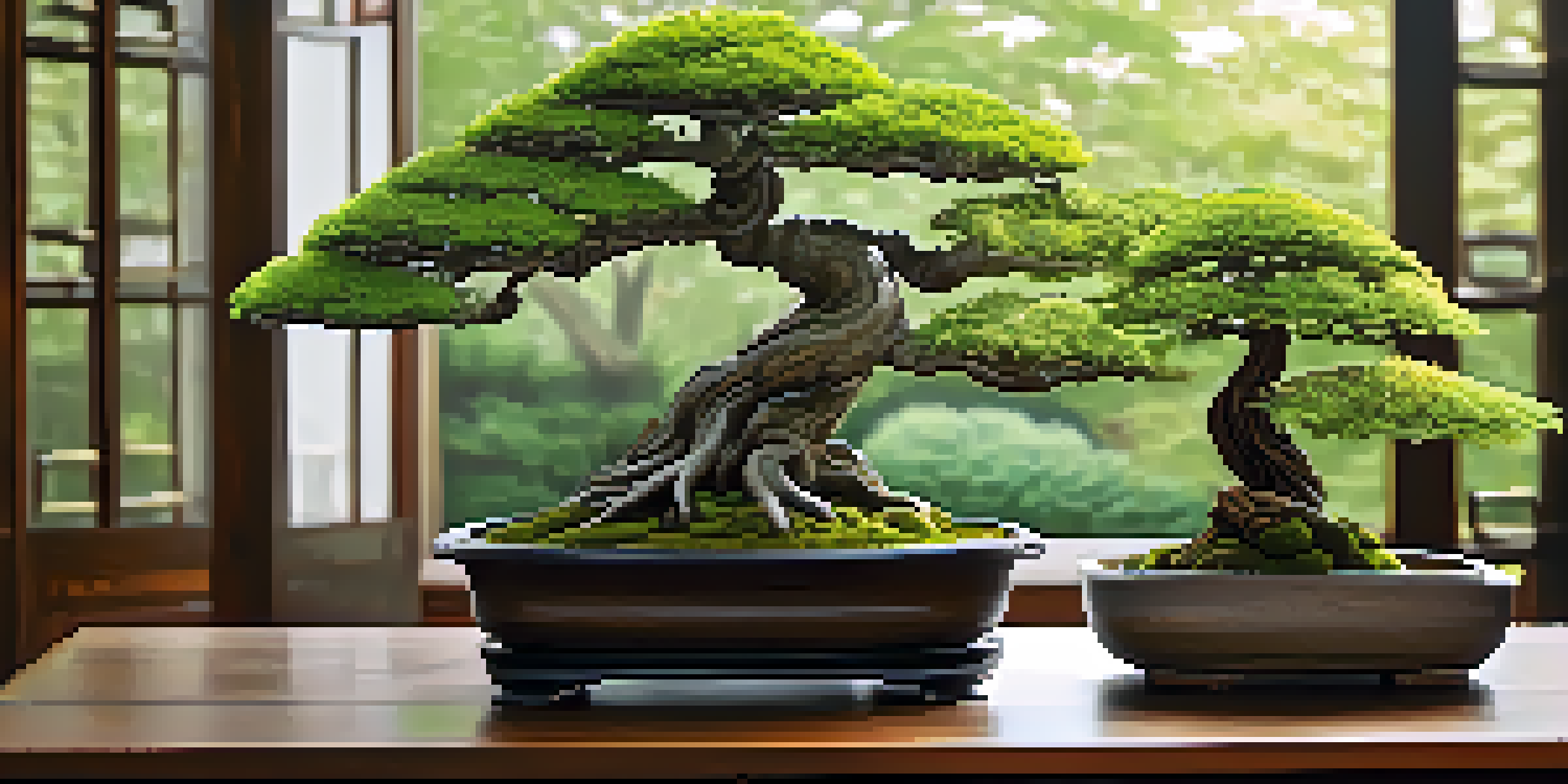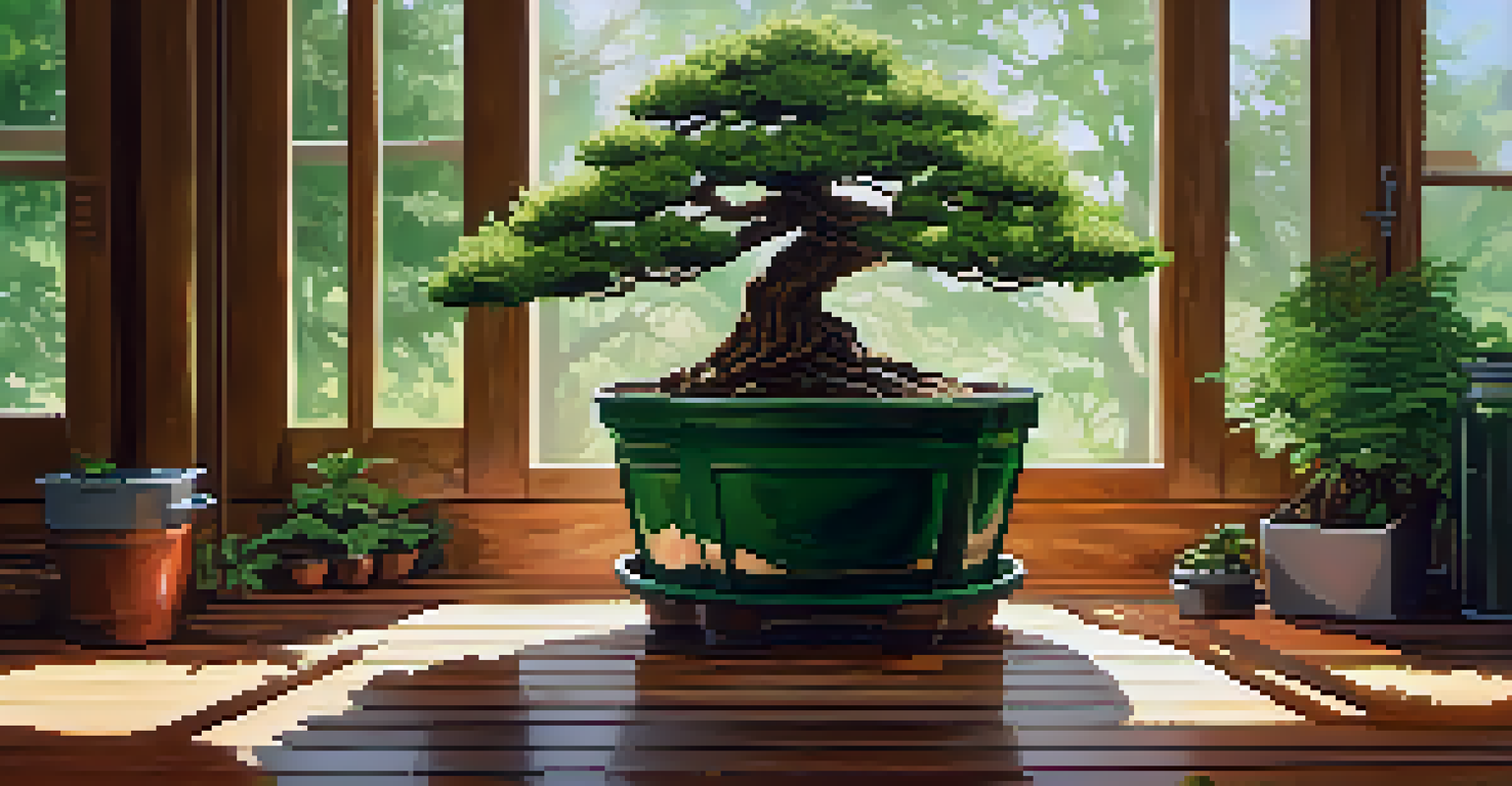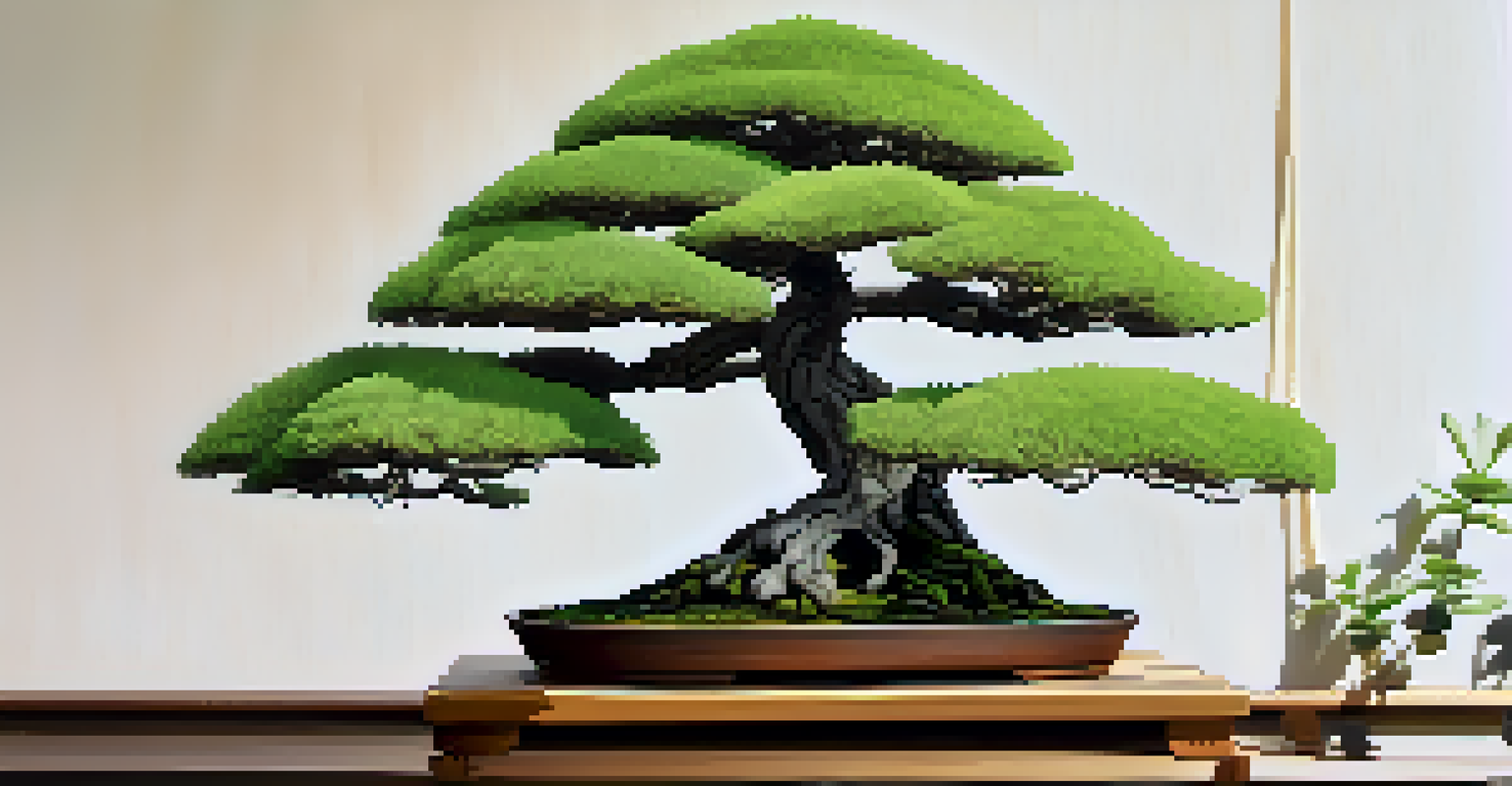Bonsai and Sustainability: Eco-Friendly Cultivation Practices

Understanding Bonsai: An Art Form with Roots in Nature
Bonsai is more than just a miniature tree; it's a beautiful blend of art and nature. Originating from ancient China and later embraced by Japanese culture, bonsai represents the harmony between nature and human creativity. This practice invites us to appreciate the beauty of trees, encouraging mindfulness and patience.
The creation of a thousand forests is in one acorn.
Each bonsai tree tells a story, reflecting the natural world in a compact form. By maintaining these living sculptures, we foster a deeper connection with the environment. This connection is vital, especially as we navigate an era marked by environmental challenges.
By understanding the essence of bonsai, we can explore sustainable cultivation practices that honor this tradition while being mindful of our ecological footprint.
Choosing the Right Tree: Native Species for Eco-Friendliness
When selecting a bonsai tree, consider using native species. Native trees are adapted to the local climate and soil, making them more resilient and requiring less maintenance. This choice not only supports local ecosystems but also reduces the need for chemical fertilizers and pesticides.

For example, if you live in a temperate region, trees like Japanese Maple or Boxwood can thrive as bonsai. These species blend beautifully into gardens while providing essential habitats for local wildlife. Choosing native trees promotes biodiversity and strengthens the local environment.
Embrace Native Trees for Bonsai
Choosing native species for bonsai enhances local ecosystems and requires less maintenance.
By opting for native species, bonsai enthusiasts can cultivate their passion sustainably, contributing positively to their surroundings.
Sustainable Soil Practices: Nourishing Your Bonsai Naturally
Healthy soil is the foundation of successful bonsai cultivation. Instead of relying on synthetic fertilizers, consider organic options like compost or worm castings. These natural amendments enrich the soil without harming beneficial microorganisms, promoting a thriving ecosystem.
Nature does not hurry, yet everything is accomplished.
Using organic soil also reduces the risk of chemical runoff, which can pollute waterways and harm wildlife. By nurturing your bonsai with sustainable soil practices, you create a healthier environment for both the tree and the planet.
Additionally, integrating mulch can help retain moisture and suppress weeds, further enhancing soil health while minimizing environmental impact.
Water Conservation: Efficient Techniques for Bonsai Care
Watering is crucial for bonsai health, but it can also be a significant environmental concern. Implementing techniques like drip irrigation or self-watering pots can conserve water while ensuring your bonsai receives the moisture it needs. These methods minimize water waste and promote efficient hydration.
Another effective strategy is to collect rainwater using barrels. This not only reduces reliance on municipal water sources but also provides your bonsai with natural, chemical-free water. Rainwater is often more beneficial for plants compared to tap water, which may contain chlorine and other additives.
Sustainable Soil and Water Practices
Utilizing organic soil amendments and efficient watering techniques promotes healthier bonsai and conserves resources.
By adopting these practices, bonsai enthusiasts can care for their trees while actively participating in water conservation efforts.
Pest Management: Eco-Friendly Solutions for Bonsai Health
Pest management is essential for maintaining healthy bonsai, but traditional methods can be harmful to the environment. Instead of chemical pesticides, consider using natural alternatives like neem oil or insecticidal soap, which are effective yet less harmful to beneficial insects.
Encouraging natural predators, such as ladybugs or lacewings, can also help control pest populations without resorting to harmful chemicals. These small allies can significantly reduce pest issues, promoting a balanced ecosystem around your bonsai.
By focusing on eco-friendly pest management, you can keep your bonsai thriving while protecting the broader environment.
Pruning Techniques: Sustainable Practices for Bonsai Shaping
Pruning is an integral part of bonsai cultivation, shaping the tree while promoting healthy growth. To practice sustainability, use sharp, clean tools to minimize damage to the plant. This ensures that your pruning is efficient and reduces the likelihood of disease.
Additionally, consider using the pruned branches for propagation or creating new bonsai trees. This not only reduces waste but also allows you to expand your collection sustainably. Each cutting can potentially become a new tree, embodying the cycle of growth.
Foster Community for Eco-Friendly Care
Engaging with bonsai communities encourages the sharing of sustainable practices and enhances collective commitment to the environment.
By adopting mindful pruning techniques, bonsai enthusiasts can enhance their trees' beauty while practicing sustainable cultivation.
Community and Education: Sharing Sustainable Bonsai Practices
Building a community around bonsai can amplify sustainable practices. Engage with local bonsai clubs or online forums to share experiences, tips, and resources. This collaborative spirit fosters a culture of sustainability, where members learn from one another.
Hosting workshops or demonstrations can also help spread awareness about eco-friendly bonsai care. By educating others about sustainable practices, you empower more enthusiasts to adopt environmentally friendly methods.

Ultimately, creating a supportive community not only enriches your bonsai journey but also contributes to a collective commitment to sustainability.
Conclusion: Cultivating Bonsai with a Sustainable Mindset
In conclusion, cultivating bonsai can be a rewarding and eco-friendly endeavor. By embracing sustainable practices, enthusiasts can enjoy the beauty of bonsai while minimizing their environmental impact. From selecting native species to implementing water conservation techniques, every small step counts.
As we nurture our bonsai, let's remember the bigger picture—our role in protecting the planet. Each tree we cultivate contributes to a healthier environment, reminding us of nature's interconnectedness.
Ultimately, bonsai cultivation can be a powerful way to express our values of sustainability and appreciation for the natural world.